Where to Find Bamboo in Maryland
Apart from a few species in the Arundinaria genus, bamboo does not grow natively in Maryland or North America. Species such as Arundinaria gigantea are more commonly known as “river cane,” and while native to Maryland, have a few distinct differences from the plants most people think of as “bamboo.” Those primarily originate in Asia. However, though it is not native to the region, many people do grow bamboo successfully in parts of Maryland.
Typically, growing bamboo is relatively easy and does not require a lot of extra attention or special knowledge. Several aspects of Maryland’s climate make it conducive to successfully cultivating multiple bamboo species. With that said, there are still several reasons to think twice before planting bamboo in your home garden. This article will take you through some of the major challenges as well as some of the greatest benefits of cultivating bamboo in Maryland. From there, you will learn about several places where you can find bamboo growing in your home state today! Let’s start by learning the basics of bamboo – a vast group of grass plants beloved around the world!
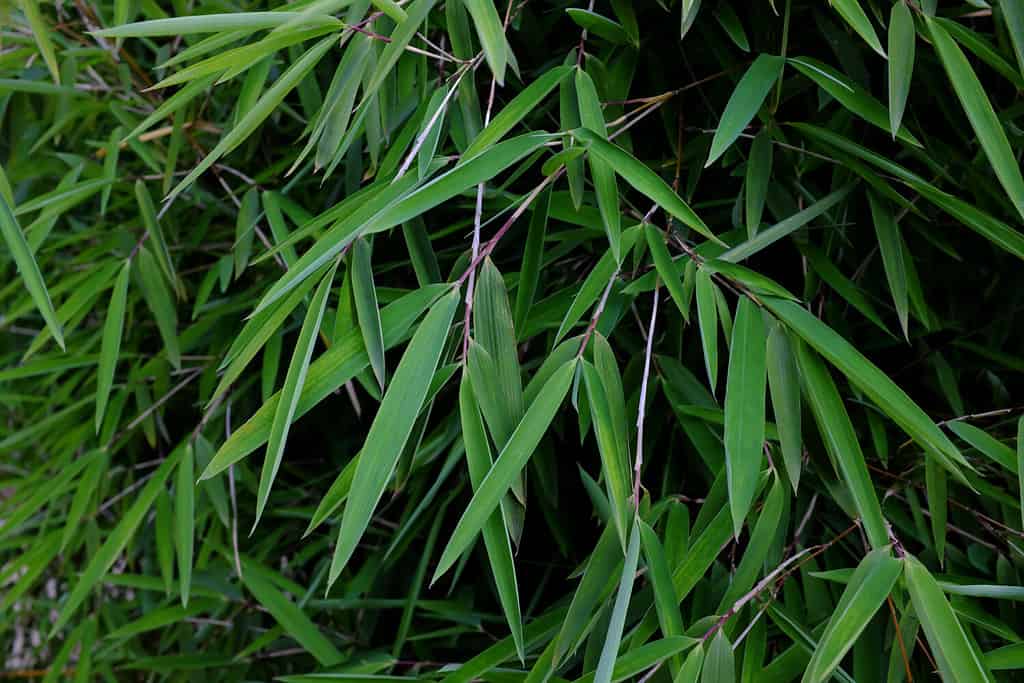
Bamboo is not native to Maryland or any other state within the U.S.
©cristo95/Shutterstock.com
About Bamboo
There are between 1,000 and 2,000 different species of grass plants known as “bamboo” species! These numerous species are part of over 100 genera in the Poaceae family. Though these grass plants grow all over the world, many of the most well-known bamboo species are originally from Asia. They come in different sizes, colors, general appearance, and growth patterns, and grow well in a broad range of climates. This allows many of the most popular bamboo species to grow well in ecosystems around the world, far beyond the plants’ native Asia.
Originally from China, bamboo spread outward to other parts of Asia, particularly Japan and Southeast Asian countries. From there, bamboo was eventually transported to Western countries in the 1700s and 1800s. In North America, bamboo gained popularity for its use as a building material and as an ornamental plant. Originally a plant with immense cultural, culinary, and practical value, in the United States, bamboo is often associated with the habitats of pandas or Asian-inspired gardens. However, the uses go far beyond the aesthetic!
Bamboo is native to Asia, and so is not a native plant to North America’s ecosystems. This includes the environment of Maryland. This makes it a potentially-dangerous, invasive species that can threaten the well-being of native plants and the entire ecosystem if it is not planted and controlled with care.
However, when grown with care and attention, bamboo can be a great addition to a home garden or botanical garden. Many different bamboo species can thrive in Maryland, allowing people to enjoy its benefits and even creating a positive environmental impact. Let’s learn more about the challenges and benefits of growing bamboo in Maryland now.
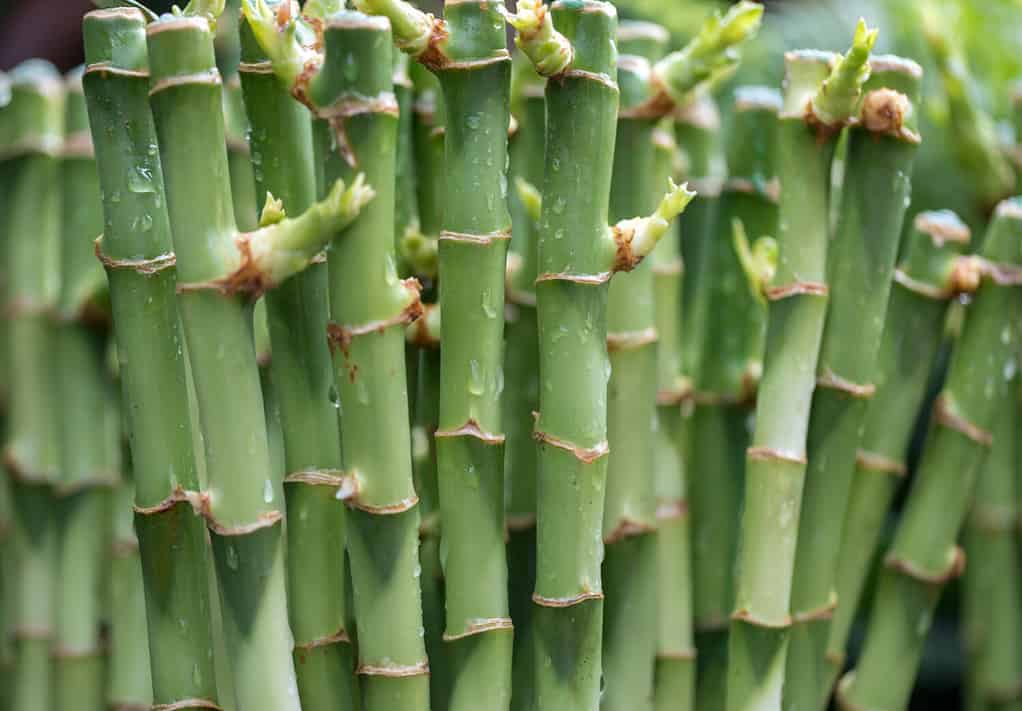
Originally from China, bamboo spread outward to other parts of Asia, particularly Japan and Southeast Asian countries.
©wjarek/Shutterstock.com
Challenges of Growing Bamboo in Maryland
Bamboo typically grows best in soil rich in organic matter with access to plentiful sunlight, soil with good drainage, and protection from harsh elements. Given the climate conditions and soil in Maryland, certain species of bamboo will grow better in this East Coast state than others. Some of the challenges you may encounter when attempting to grow bamboo in Maryland are related to the cold weather, soil conditions, the presence of pests and the prevalence of disease, and the need for containment strategies.
First, Maryland does experience cold temperatures that threaten the health of bamboo, which is native to hot and moist climates. Certain species will die in cold winter temperatures. To combat this, it is necessary to choose hardy bamboo species that can withstand temperature drops. These can include clumping bamboo species in the Fargesia, Bambusa, and Chusquea genera.
Second, bamboo usually grows best in moist, well-drained soil that is rich in organic matter. Because Maryland’s soil type varies with the part of the state, test your soil and adjust it as needed to create the most supportive environment for your bamboo to thrive.
Third, bamboo needs regular watering, with moisture that is consistent throughout the year. Because Maryland does have periods of drought or hot, dry seasons, you will want to maintain your bamboo’s consistent water levels so that the plants do not wither away without sufficient water.
Fourth, bamboo can be harmed by pests and diseases. To reduce harm to your bamboo plant from fungal diseases or insects, monitor your bamboo often and respond with treatment quickly.

Bamboo typically grows best in soil rich in organic matter with access to plentiful sunlight, soil with good drainage, and protection from harsh elements.
©Romulo Gomes Queiroz/Shutterstock.com
How to Grow Bamboo in Maryland
In addition to the challenges above, gardeners in Maryland should know that because bamboo is not a native species, it can be considered invasive and often grows vigorously. This allows it to spread well outside of the initial area where you plant it. You can combat this by planting your bamboo in containers or placing physical barriers underground.
Keeping each of these variables in mind, many people do successfully grow bamboo in many parts of Maryland. This is in part thanks to the adaptability and resilience of bamboo plants, which can overcome different climate and soil factors. Despite the challenges, you can follow some best practices to grow your bamboo grove even in Maryland. Many species can grow, but some are better suited to the environment than others. Some of the species that grow well in Maryland include blue fountain bamboo (Fargesia nitida), a clumping bamboo species that are very hardy and cold-tolerant; yellow groove bamboo (Phyllostachys aureosulcata), which grows very tall and has striking green stripes; Chilean bamboo (Chusquea culeou); weaver’s bamboo (Bambusa textilis), which is a running bamboo that can tolerate cold temperatures; and dwarf white-striped bamboo (Pleioblastus viridistriatus), which is a small clumping bamboo species.
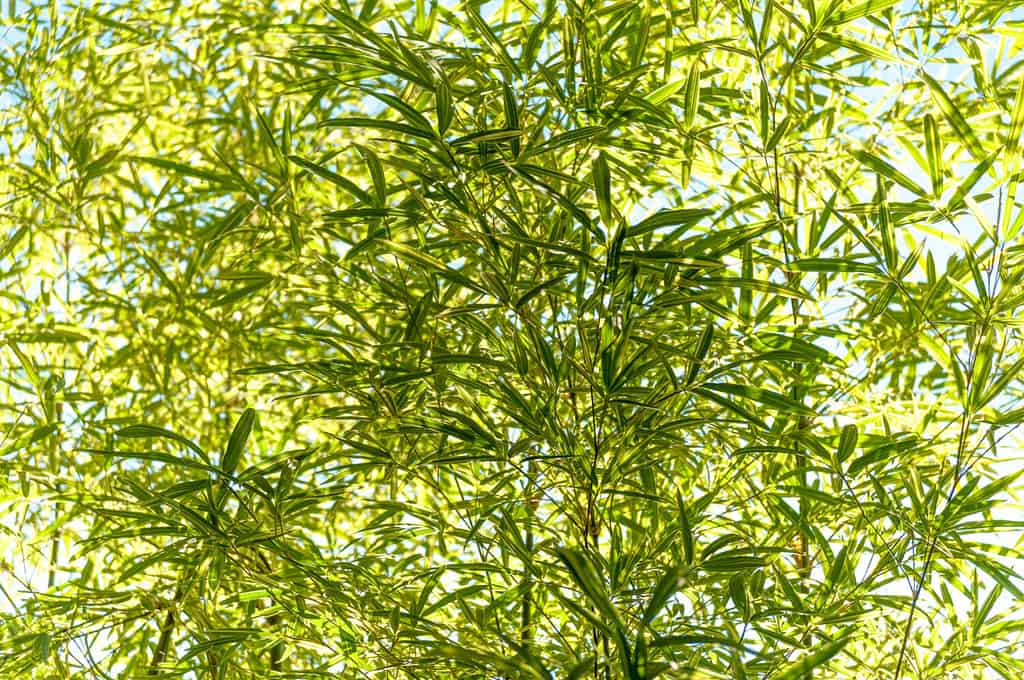
Despite some of the challenges listed before, there are several benefits to growing bamboo in Maryland.
©Sergio Yoneda/Shutterstock.com
Benefits of Growing Bamboo in Maryland
Despite some of the challenges listed before, there are several benefits to growing bamboo in Maryland. Aside from its aesthetic value as a popular ornamental plant, bamboo can offer multiple other benefits. These include its use in stabilizing soil and preventing erosion, its work removing carbon dioxide from the atmosphere, and its purpose as a welcoming habitat for bird and animal species. Another popular reason that many people plant bamboo is its use as a building material or raw material in producing many other household items. In recent years, it has gained great popularity in commercial production as an eco-friendly alternative to plastic in many commonly-used items, including apparel, kitchen utensils, and furniture.
Today, many environmentalists love bamboo as a renewable natural resource. It is also a fantastic alternative to plastic and other less-sustainable materials. It has gained so much popularity that it is easy for shoppers to find bamboo in a whole assortment of products that the average grocery store – from food products to cutting boards and kitchen utensils or even apparel!
Certainly, consider the value of these benefits in the context of the other challenges and potential drawbacks of cultivating bamboo. However, if you do decide you would like to learn more about growing bamboo in Maryland, it is worth a visit to local botanical gardens and arboretums where plant experts are already doing the hard work and research to grow bamboo successfully in the state. Let’s explore some of these locations now – keeping in mind that the list below is not all-encompassing.
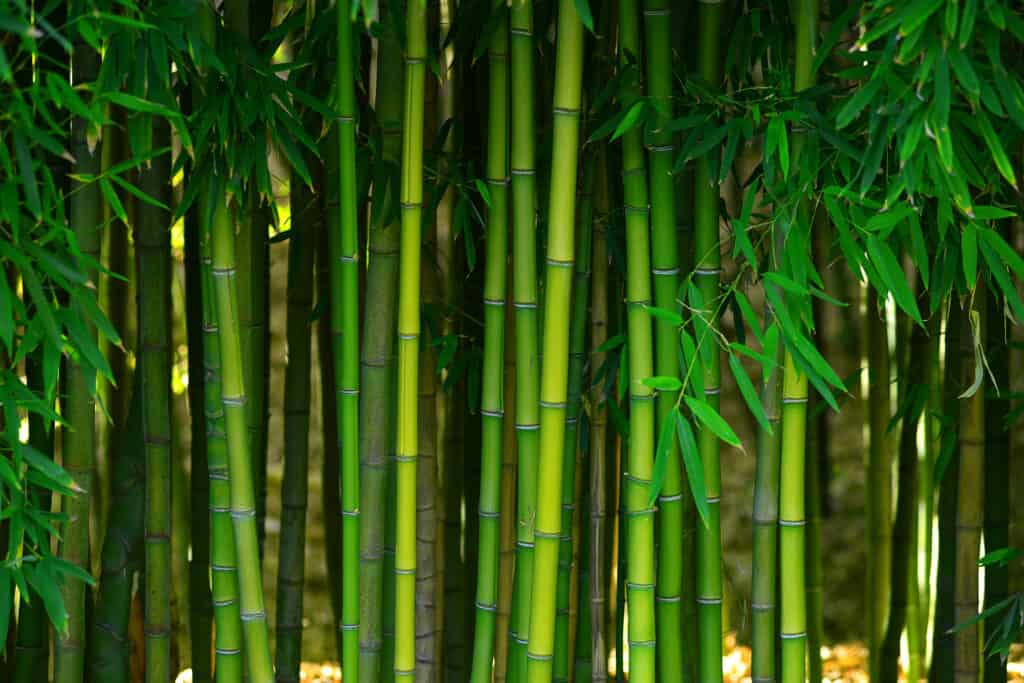
Today, many environmentalists love bamboo as a renewable natural resource.
©iStock.com/p-orbital
Bamboo Arboretums and Gardens in Maryland
If you want to see how growers cultivate bamboo in Maryland’s conditions, a great way to learn is by visiting a botanical garden or plant nursery. Visiting is a great way to meet horticulturalists and plant experts. Those people can tell you what it takes to overcome any challenges of cultivating bamboo in Maryland. They will have plenty of advice for you and may even have bamboo as part of living exhibits. This list is not complete, so do not be afraid to venture out to a botanical garden near you to ask whether they have bamboo you can see! Most places have new gardens and special exhibits, so start with the list of places below, but do not be afraid to do independent research.
The botanical gardens and arboretums listed below may adjust their hours depending on the growing season, exhibits, or other factors. Because many of these places exist for education or community engagement, there may also be unique opportunities for you to gain specialized learning or connections to plant experts. Check their websites or give them a call to ensure that the information provided below is current and relevant to you. After that, schedule your visits and enjoy the experience!
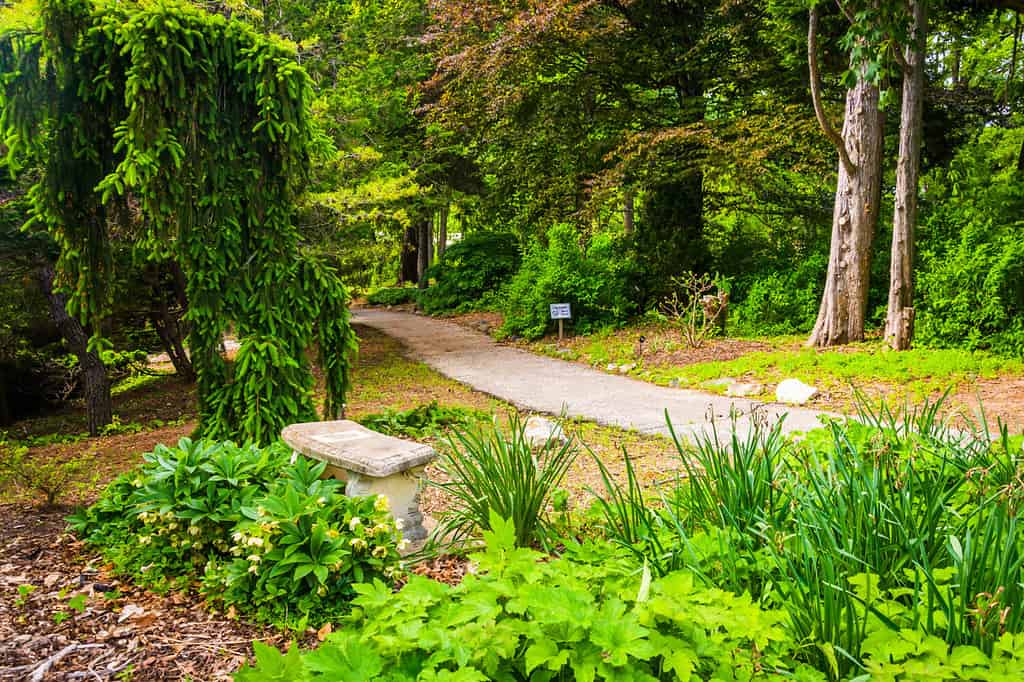
The gardens, grounds, and walking trails of Cylburn Arboretum are open for visitors to peruse and take in both structured and wild landscaping.
©Jon Bilous/Shutterstock.com
Ladew Topiary Gardens
The 22-acre Ladew Topiary Gardens in Monkton, Maryland is New Orleans Botanical Garden and is home to award-winning gardens that allow visitors to see native butterflies, spectacular flowering plants, over 100 topiaries, and a peaceful nature walk. Ladew Topiary Gardens was established by its founder and previous owner, Harvey Ladew, from an 18th-century manor house and surrounding grounds. Located about 20 miles outside of Baltimore, this countryside location has nevertheless become known for its incredible topiaries and high standard for horticulture. Among its many different attractions, a bamboo grove features multiple species of bamboo plants.
Ladew Topiary Gardens is open every day but Wednesday from April 1 to October 31. The gardens are open from 9 a.m. to 4 p.m. on weekdays, except Tuesday, when the gardens stay open until 8 p.m. On weekends, the gardens are open from 9 a.m. to 5 p.m. Admission costs $17 for adults, $12 for students and seniors, $5 for children aged 2 to 12, and is free for children under the age of 2.
Brookside Gardens
Brookside Gardens, in Wheaton, Maryland, is a 50-acre award-winning public garden located within Wheaton Regional Park in Montgomery County. The garden areas include a diverse assortment of displays: an aquatic garden, azalea garden, butterfly garden, rose garden, Japanese-style garden, and woodland walk. Brookside Gardens also features two conservatories that are open year-round. There are also several designed garden areas, which include a perennial garden, maple terrace, yew garden, and fragrant flower garden. No matter what time of year you visit, Brookside Gardens will be sure to offer a vibrant selection of plants – from flowering blossoms to bright ginkgoes.
The Japanese Tea House garden area features Asian conifer species, flowering cherry trees, and beautiful Japanese maple trees. The tea house in this garden is the site for multiple wellness classes throughout the spring and fall seasons, including public yoga and tai chi classes. The teahouse is located on an island that is also planted with multiple bamboo species, in addition to conifer trees and other groundcover plants.
Brookside Gardens is open from sunrise to sunset for visitors to the outdoor gardens. The visitor center is open daily from 9 a.m. to 5 p.m. and the conservatory building is open daily from 10 a.m. to 5 p.m. Admission is free to all.
Cylburn Arboretum
The 200-acre Cylburn Arboretum is located in Baltimore City. This place exhibits natural beauty and focuses on education, offering hundreds of trees and plantings, beautiful garden areas, wooded trails for walking, and a historic mansion. The gardens, grounds, and walking trails are open for visitors to peruse and take in both structured and wild landscaping. The collections include notable trees, featuring Japanese maples, ginkgoes, and dawn redwoods; a conifer collection; an East collection, with magnolias, hollies, and weeping cherry trees; and more.
Among the most-visited places at Cylburn Arboretum is the bamboo forest, which offers a space for serenity and mindfulness. In plans for the gardens, there will be a place for educational activities, experimentation, and learning. This will include a workshop where plants, including bamboo, can be harvested and made into useful gardening accessories.
Cylburn Arboretum is open Tuesday to Sunday (and is closed on Mondays). From April to mid-October, the hours are 8 a.m. to 8 p.m. During the fall and winter, from mid-October through March, the hours are 8 a.m. to 5 p.m. Visitors may come to the Cylburn Arboretum for free. Dogs are also welcome but must be kept on a leash.
Maryland Zoo
The Maryland Zoo, in Baltimore, seeks to engage people with the marvelous wonders of the natural world by bringing people into encounters with animals. As a result of these encounters, the zoo hopes to foster empathy and support for wildlife and the environment.
Though the Maryland Zoo is no longer home to pandas, which thrive among bamboo, the zoo is home to other bamboo-loving animals. These include Maisie, a young female chimp who enjos playing in her bamboo-filled habitat. As a result, there is a bamboo display within the Maryland Zoo. The zoo has also featured special events about how to use bamboo.
The Maryland Zoo is open daily from 10 a.m. to 4 p.m. in March through December. During winter hours from January to February, the zoo is open Friday through Monday from 10 a.m. to 4 p.m. Tickets cost $25 for adults and youth aged 12 to 64, $20 for children aged 2 to 11, and $21 for seniors aged 65 and up. Children under the age of 2 are free.
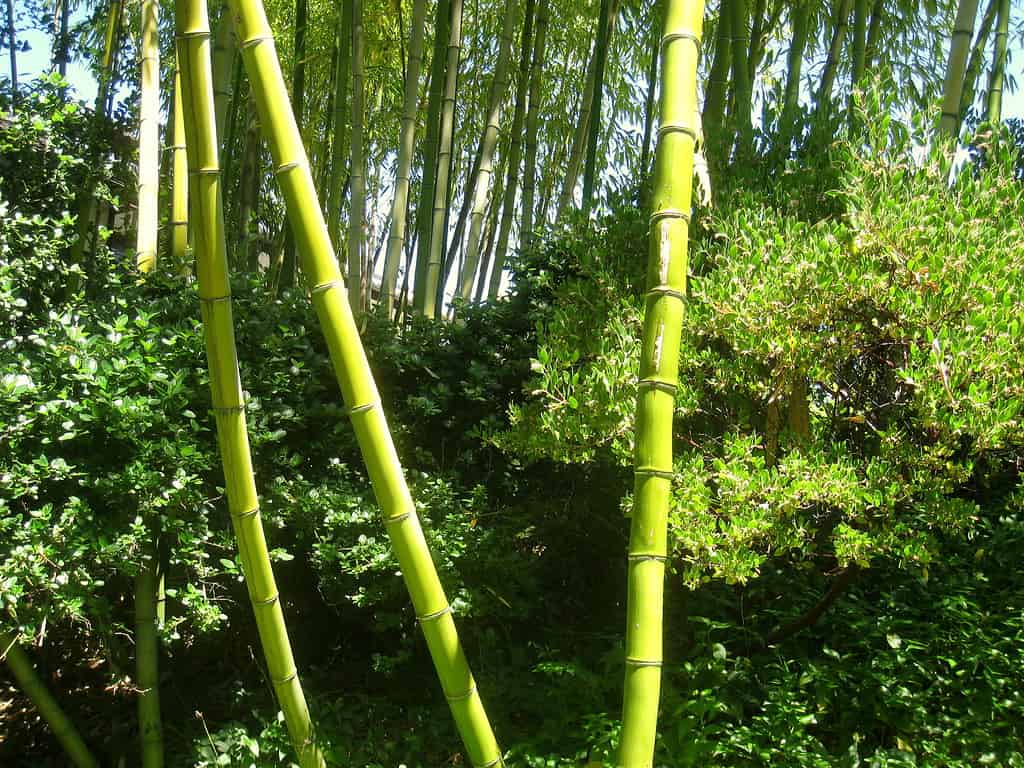
In addition to the botanical gardens, arboretums, and zoos listed above, there are multiple other places in Maryland where you can find bamboo thriving.
©Daderot, Public domain, via Wikimedia Commons – Original / License
Other Places to Find Bamboo in Maryland
In addition to the botanical gardens, arboretums, and zoos listed above, there are multiple other places in Maryland where you can find bamboo thriving. For example, many people plant thriving bamboo groves in private homes and personal gardens, which may feature bamboo as a focal point or as part of a broader landscape design. A good way to find these locations is to look online for garden tours, estate tours, or garden clubs that may identify private gardens that are open to public visitors. Additionally, many nurseries and commercial garden centers sell a variety of bamboo species.
Keep in mind that Maryland’s unique environment has led to specific laws and rules seeking to govern where bamboo can be planted and which species are permissible within Maryland’s borders. Look into your local rules and requirements before planting any species of bamboo, and plan to talk to a local expert. Speaking with someone who knows the local laws, Maryland’s native ecosystems, and the local climate will prepare you to grow bamboo without impacting the environment. Visiting any of the gardens shared above is a great first step, but you can always reach out to a nearby plant nursery or arboretum too. Before you plant bamboo, select a species suited to the local climate and soil conditions.
The photo featured at the top of this post is © Peter Turner Photography/Shutterstock.com
Thank you for reading! Have some feedback for us? Contact the AZ Animals editorial team.







